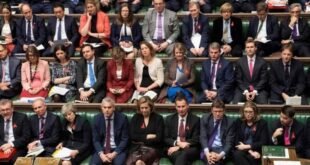The Burden of Bureaucracy in Kenya’s Healthcare System
Kenya’s healthcare system is facing a crisis that goes beyond the usual challenges of disease and funding. At the heart of the issue lies a complex web of regulations that hinders the efficient operation of private health facilities. For many, the dream of establishing a small clinic in their hometown has turned into a nightmare due to excessive paperwork and overlapping requirements.
The problem is not about a lack of patients or capital; rather, it stems from the overwhelming number of regulatory bodies involved. Private health facilities must navigate through at least eight different regulators, each with its own set of inspections, fees, and documentation. These agencies often operate in isolation, leading to confusion, delays, and increased costs.
A Fragmented Regulatory Landscape
Each regulator has its own mandate and procedures, resulting in a system that is both inefficient and frustrating for providers. For instance, the Kenya Medical Practitioners, Pharmacists and Dentists Council (KMPDC) handles facility licensing, while the Pharmacy and Poisons Board (PPB) oversees pharmacies. Similarly, the Kenya Medical Laboratory Testing and Training Board (KMLTTB) manages laboratories, and the Kenya Nuclear Regulatory Authority (KNRA) ensures radiation safety.
In addition to these, there are other entities such as the Office of the Director of Public Prosecutions (ODPC) for data registration, county permits for business, fire, and advertising, and professional practice licenses for all staff. This multiplicity of requirements creates a labyrinthine process that is difficult to navigate.
The Impact on Patients
The consequences of this regulatory burden are felt most by patients. Licensing costs for a small private facility can exceed Sh1.5 million annually, which is ultimately passed on to patients through higher consultation fees, medication markups, and lab charges. Moreover, when providers face bureaucratic hurdles, they may choose to operate informally, exposing patients to unregulated care.
The government, through the National Hospital Insurance Fund (NHIF) and the Social Health Assurance (SHA), also contributes to the problem by delaying reimbursements. This cashflow crunch forces providers to shift the burden back to patients, further increasing the cost of care.
A Successful Pilot Program
Despite these challenges, there is hope. The 2017 Joint Health Inspections (JHI) pilot program demonstrated that a unified approach could significantly improve compliance and reduce bribery. Using a single checklist, a team inspected over 2,000 facilities in three counties, resulting in better outcomes and greater fairness for providers.
This model was faster, fairer, and more transparent. Facilities received clear scores and actionable feedback, making the inspection process more efficient. However, nearly eight years later, the JHI model has not been scaled up across the country.
Overcoming Political Obstacles
The resistance to change comes from individual regulators who protect their turf and the revenue associated with it. A unified system, while efficient, threatens their control. The 2017 Health Act created the Kenya Health Professions Oversight Authority (KHPOA) to coordinate all health regulators, but it remains underutilized.
KHPOA should become the national licensing gateway, offering a single digital portal for all facility licenses, integrated inspections, and renewals. This approach mirrors global best practices seen in countries like Canada, Norway, and the UK, where one-stop digital platforms streamline business operations, including health facilities.
Steps Toward Reform
To make healthcare more affordable and accessible, several steps must be taken:
- Adopt Joint Health Inspections nationally: Implement a single inspection, checklist, and report for all health facilities.
- Empower KHPOA: Transform it into a unified digital licensing portal for all health facilities.
- Eliminate duplicative county trade permits: For already licensed professionals.
- Publish annual regulatory scorecards: Showing timelines, complaints, and inspection outcomes.
- Link SHA/NHIF empanelment to active licenses: Ensure timely reimbursement to providers.
A Call for Change
Kenya must shift from a system of extraction to one of enablement. The blueprint for reform is already in place, along with the necessary laws and a proven pilot solution. What is needed now is political will to implement these changes.
When regulation becomes a tool of fear, confusion, and rent-seeking, we all pay the price. It is time to build a system where providers are supported, patients are protected, and the cost of care is driven down through smarter regulation.
 Info Malang Raya Its All About World News
Info Malang Raya Its All About World News




